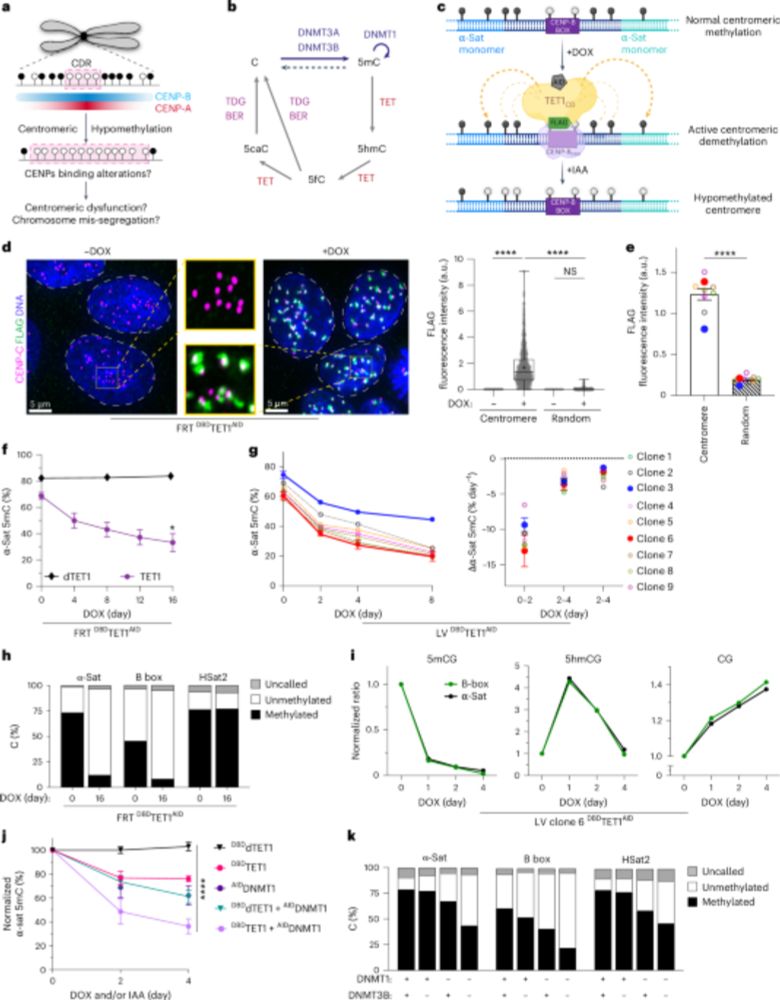
Pleased to see our latest research highlighted news.uq.edu.au/2025-10-ai-p...
09.10.2025 12:44 — 👍 0 🔁 0 💬 0 📌 0@jonesmjk.bsky.social
Investigating kinase-dependent regulation of DNA replication and repair

Pleased to see our latest research highlighted news.uq.edu.au/2025-10-ai-p...
09.10.2025 12:44 — 👍 0 🔁 0 💬 0 📌 0
For decades, human genome editing has been limited to small, localized modifications.
Today, in a new paper published in @science.org , researchers from Arc's Hsu lab show that bridge recombinase technology is capable of large-scale genomic rearrangements in human cells.

CAR T cells showcase the enormous potential of cell therapies, but often fail due to lack of evolutionary optimization. Today in @nature.com , we use #CELLFIE to engineer cell therapies at scale and share the largest resource of CRISPR screens in CAR T cells. www.nature.com/articles/s41...
24.09.2025 15:44 — 👍 4 🔁 3 💬 1 📌 1Fantastic meeting with an excellent line up of speakers. Come join us for the Australian Cell Cycle meeting in Melbourne.
25.09.2025 02:03 — 👍 5 🔁 3 💬 0 📌 1
#1 Centromeres are epigenetic loci defined by CENP-A, positioned in unmethylated DNA flanked by highly methylated regions. Our work, published in @natgenet.nature.com in collaboration with @naltemose.bsky.social investigates the role of DNAme at human centromeres www.nature.com/articles/s41...
04.09.2025 13:10 — 👍 85 🔁 36 💬 9 📌 1
1/ New preprint alert!
In collaboration between the Rosen, Redding, Collepardo-Guevara & Gerlich labs, we uncover a surprising principle of chromosome organisation: electrostatic repulsion positions centromeres at the chromosome surface during mitosis.
🔗 doi.org/10.1101/2025...

🦘🧬Australian invited speaker list finalised for the
2025 Cell Cycle, DNA repair and Telomere Meeting!
Friday 5 Sep is your last chance to register at the EARLY BIRD rate & submit an abstract 🤩
australiancellcycle.org/australian-i...
Thanks Gideon! It was a long time coming and more improvements to follow.
01.09.2025 13:59 — 👍 0 🔁 0 💬 0 📌 0Excited to share our new @NatureComms paper! We developed C-604, a selective inhibitor of Greatwall kinase, and discovered that cancer cells' sensitivity to it depends on a simple ratio: B55α/Greatwall expression levels.
www.nature.com/articles/s41...

The paper builds on our preprint with DNAscent v4 on R10.4.1 chemistry with improved BrdU and EdU detection and fork calling.
01.09.2025 10:04 — 👍 0 🔁 0 💬 0 📌 0
Checkout our latest research in @natcomms.nature.com
rdcu.be/eBqBI A high-resolution, nanopore-based artificial intelligence assay for DNA replication stress in human cancer cells. A collaboration with Mike Boemo’s team

Image of Toronto
JOB ALERT 🚨 We are hiring TWO principal investigators in cell, molecular, systems, or chemical biology in Toronto, Canada at @sinaihealth.bsky.social. We provide a generous startup, fully funded salary and academic appointment at U of Toronto.
www.nature.com/naturecareer...
Please repost!

#NEW_PAPER
In this study, the Chan Lab uncover the molecular mechanisms by which human cells safeguard centromeric chromatin during mitosis, via tight dynamic control of the Bloom Syndrome complex (BTRR).
rdcu.be/eCGxF

This insightful manuscript implicating STAG3 in mitotic, rather than the known meiotic, control of chromatin architecture came out a couple of days ago. Glad to see it in our pages @natsmb.nature.com and I am looking forward to see what the community will think www.nature.com/articles/s41...
27.08.2025 10:49 — 👍 6 🔁 4 💬 0 📌 0
Online Now: A redox switch in p21-CDK feedback during G2 phase controls the proliferation-cell cycle exit decision Online now:
26.08.2025 19:17 — 👍 9 🔁 4 💬 0 📌 1
Nature research paper: Targeting G1–S-checkpoint-compromised cancers with cyclin A/B RxL inhibitors
go.nature.com/45JauuG